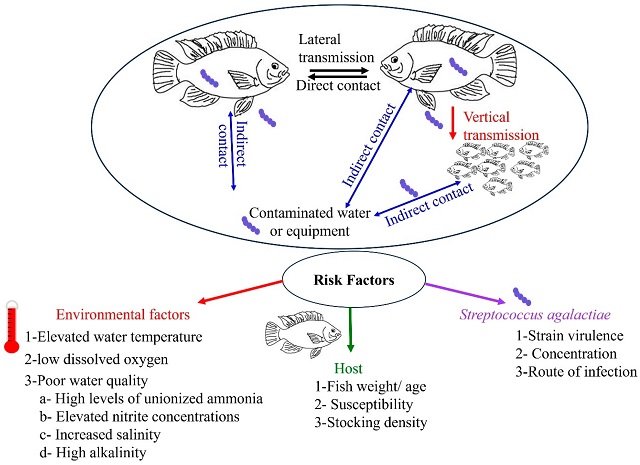USA.- The United States annually imports nearly $1 billion worth of tilapia while producing another 30 million pounds ourselves. This makes tilapia the U.S.’s fourth most consumed fish. Worldwide, farmed-raised tilapia is nearly an $8 billion yearly industry. Those same tilapia farmers lose about $1 billion annually due to streptococcosis. The main culprits are two bacteria, Streptococcus agalactiae and S. iniae.
Agricultural Research Service (ARS) scientists and industry partners have developed tilapia that are resistant to both S. iniae and S. agalactiae.
Strategies to combat streptococcosis are effective, but not without drawbacks. Vaccines and antibiotics are expensive, and using antibiotics raises concerns about antimicrobial resistance.
Benjamin LaFrentz and Craig Shoemaker, molecular biologists at the ARS Aquatic Animal Health Research Unit in Auburn, Alabama, showed that selective breeding for disease resistance is a promising alternative.
Working with Akvaforsk Genetics, a selective breeding company specializing in aquaculture species, and Spring Genetics, a tilapia breeding and distribution company, LaFrentz and Shoemaker evaluated tilapia for resistance to S. iniae and S. agalactiae. They found that crosses between the best performing fish were more resistant to the bacteria than other tilapia.
This milestone research paves the way for developing more lines of tilapia with resistance to other pathogens. Spring Genetics data shows that the improved tilapia lines will save an average-size farm nearly $635,000 a year annually.
The studies, published in Aquaculture, will help fish farmers produce better fish and use fewer antibiotics.
Stay Always Informed
Join our communities to instantly receive the most important news, reports, and analysis from the aquaculture industry.
Contact
Benjamin R Lafrentz
Aquatic Animal Health Research
General Biological Science
benjamin.lafrentz@ars.usda.gov
Phone: (334) 887-3741 ext. 151
Fax: (334) 887-2983
Reference:
Craig A. Shoemaker, Carlos A. Lozano, Benjamin R. LaFrentz, Julio C. García, Esteban Soto, De-Hai Xu, Benjamin H. Beck, Morten Rye. Additive genetic variation in resistance of Nile tilapia (Oreochromis niloticus) to Streptococcus iniae and S. agalactiae capsular type Ib: Is genetic resistance correlated? Aquaculture, Volume 468, Part 1, 1 February 2017, Pages 193–198
https://doi.org/10.1016/j.aquaculture.2016.10.022
http://www.sciencedirect.com/science/article/pii/S0044848616307074
Source: Agricultural Research Service
Editor at the digital magazine AquaHoy. He holds a degree in Aquaculture Biology from the National University of Santa (UNS) and a Master’s degree in Science and Innovation Management from the Polytechnic University of Valencia, with postgraduate diplomas in Business Innovation and Innovation Management. He possesses extensive experience in the aquaculture and fisheries sector, having led the Fisheries Innovation Unit of the National Program for Innovation in Fisheries and Aquaculture (PNIPA). He has served as a senior consultant in technology watch, an innovation project formulator and advisor, and a lecturer at UNS. He is a member of the Peruvian College of Biologists and was recognized by the World Aquaculture Society (WAS) in 2016 for his contribution to aquaculture.




